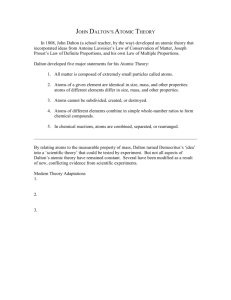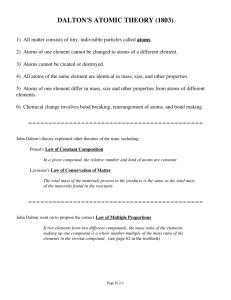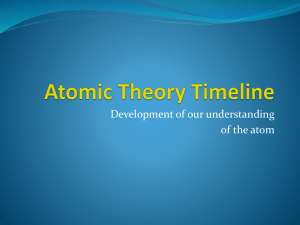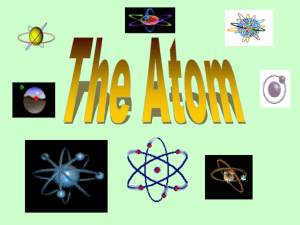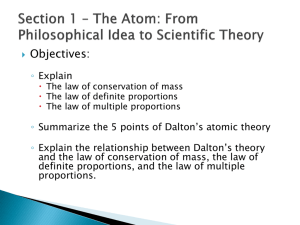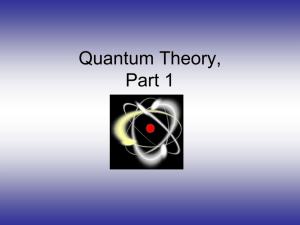Section 3_1 Notes
advertisement
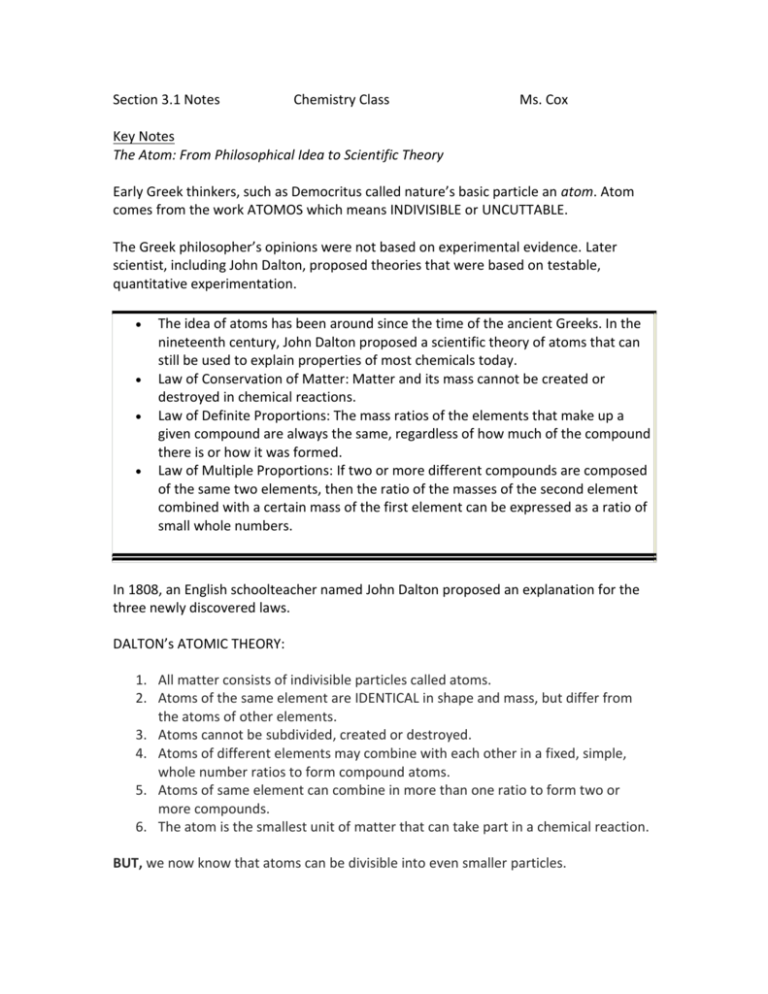
Section 3.1 Notes Chemistry Class Ms. Cox Key Notes The Atom: From Philosophical Idea to Scientific Theory Early Greek thinkers, such as Democritus called nature’s basic particle an atom. Atom comes from the work ATOMOS which means INDIVISIBLE or UNCUTTABLE. The Greek philosopher’s opinions were not based on experimental evidence. Later scientist, including John Dalton, proposed theories that were based on testable, quantitative experimentation. The idea of atoms has been around since the time of the ancient Greeks. In the nineteenth century, John Dalton proposed a scientific theory of atoms that can still be used to explain properties of most chemicals today. Law of Conservation of Matter: Matter and its mass cannot be created or destroyed in chemical reactions. Law of Definite Proportions: The mass ratios of the elements that make up a given compound are always the same, regardless of how much of the compound there is or how it was formed. Law of Multiple Proportions: If two or more different compounds are composed of the same two elements, then the ratio of the masses of the second element combined with a certain mass of the first element can be expressed as a ratio of small whole numbers. In 1808, an English schoolteacher named John Dalton proposed an explanation for the three newly discovered laws. DALTON’s ATOMIC THEORY: 1. All matter consists of indivisible particles called atoms. 2. Atoms of the same element are IDENTICAL in shape and mass, but differ from the atoms of other elements. 3. Atoms cannot be subdivided, created or destroyed. 4. Atoms of different elements may combine with each other in a fixed, simple, whole number ratios to form compound atoms. 5. Atoms of same element can combine in more than one ratio to form two or more compounds. 6. The atom is the smallest unit of matter that can take part in a chemical reaction. BUT, we now know that atoms can be divisible into even smaller particles.





